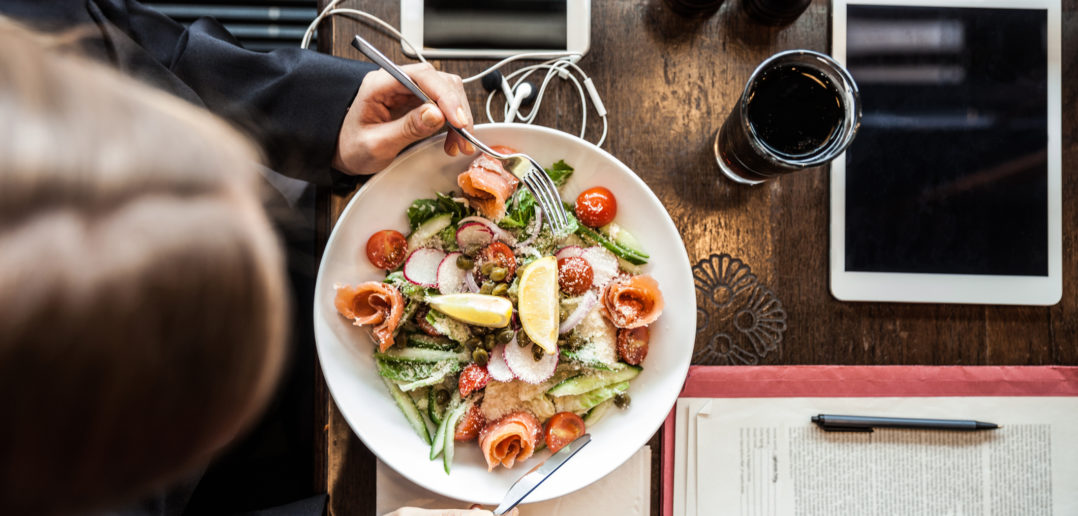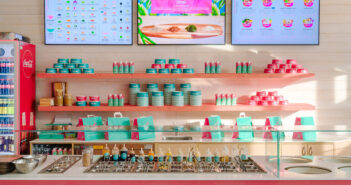We are not referring to some bot that lets you order inside the infamous Facebook Messenger, nor to those recent screens placed at McDonald’s all over for table service.
The matter may be far more complex – with a lesser play flow perhaps – but of extreme utility.
Yes, because technological innovation could serve to guarantee us a more conscious food consumption: learn more about what we eat, as well as about what and how we should eat.
In his article “The Future of Food – The Food of the Future“, Bertalan Mesko, geneticist, reminds us that “we do not really know what we buy at the supermarket.”
Beyond the list of ingredients (some extremely generic) and indications of calories, carbohydrates and fats, we are not able to go back to the quality of the production areas, breeding or packaging methods, or other properties of the product (the “real” properties not the ones lauded by advertising).
We do not know if our meal will be easily digested by the stomach or if we are slowly poisoning ourselves (according to some European statistics, about 250,000 people suffer from allergies and intolerances of which they are not even aware)!

Mixed use retail and leisure: What happens next? – White Paper
No wonder then that some companies are working for some time to implement the so-called “bio scanners” – a portable gadget that can inform us about the ingredients and the macronutrients in our food. A bio scanner will tell us exactly how much sugar there is in a piece of fruit or how much alcohol in the drink we are about to enjoy.
This might sound a bit manic but let’s step into the shoes of those who have some health problems or those who have decided to embrace a healthy and flawless lifestyle.
Some versions of bio scanners, optical sensors and, of course, the inevitable algorithms, will detect the presence of harmful toxins such as pesticides or antibiotics, and, thanks to sensors for the detection of gluten, we can obtain a response in just two minutes, by examining a minimum portion of food.
Come to think of it, no school cafeteria could do without it!
Of course these startups are yet to resolve problems related to the size of the equipment (the engineers will be able to maintain the effectiveness of the analysis by reducing the size) as well as the accuracy of the algorithms. However, a starred restaurant could provide it to the client, on request, and offer an unprecedented culinary and service experience, far beyond the table of allergens.
And there’s more!
We know that you should pay attention to your body and its demands; eat when you’re hungry, stop when you’re full. But how to get more precise scientific indication and identify the “drivers”?
The solution could come from nutrigenomics – a “branch of molecular medicine that studies the relationship between diet, disease and individual genetic makeup” (Wikipedia). The idea behind this study is that every individual has too specific dietary needs to rely on some standard or worse diet. Plus, the information about our real nutritional needs are, in fact, contained in the genome. After mapping your DNA, (visiting a lab or by taking advantage of a special home kit), you can simply insert the data into an application on your smartphone and get constant instructions on which foods to ingest and which to avoid.
The California based startup developing this project aims to complete customisation of the diet for every citizen, with the precision and pace of nutritionists of famous stars!
But what if the problem does not come from food or cooking, but by incorrect habits?
Well, help could come from intelligent tools.
Hapifork, for example, a fork already available in the market, is a real “coach” that teaches us to eat more slowly and enjoy our food, thereby reducing the risk of indigestion and gaining weight. It can prove to be a valuable ally for training programs on food or in personal diet management.
Or take the example of the elderly or those suffering from Parkinson’s disease. If they could only lift a single piece of cutlery, should they be deprived of a nice dinner out with the family? The producers of Liftware come to their rescue with their unique cutlery that has a flicker stabiliser to reduce the oscillation of the hand by about 70 percent!
If you’re already tired of avant-garde juices, we also remember the use of 3D printers for creating gourmet gelato cones or dishes (also proposed by a participant at the DESITA GELATO AWARD).
“Imagine the kitchen of the future …” says Mesko “Mother uses a clever knife to cut the carrots; the child uses a sensor to determine if the bread before him contains gluten; the family owns a 3D printer to create pizza with four cheeses loved by the father and, more importantly, everyone prepares a meal together.”
The real point is that the technology should not replace the creative components or social and natural eating habits, but be able to solve specific problems, even on a large scale, and help us keep track of the changes triggered by plant mutations that are inevitably affecting our food and health.
Top photo © LeoPatrizi/GettyImages



![[NEW] MAPIC interview: In conversation with Tobias Karlsson, Global Real Estate Director, KIKO Milano](https://www.beyondretailindustry.com/wp-content/uploads/2024/05/MicrosoftTeams-image-44-5-351x185.jpg)
![[NEW] MAPIC interview: In conversation with Giovanni Porcu, CEO and founder of Doppio Malto](https://www.beyondretailindustry.com/wp-content/uploads/2024/03/DM-Magenta_1-351x185.jpeg)